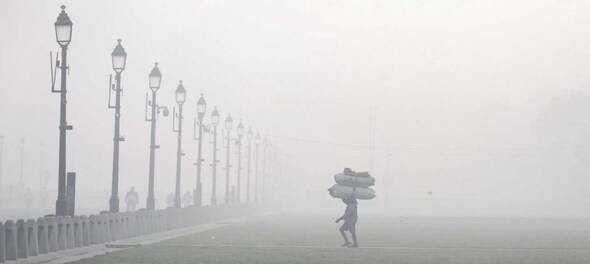
Delhi witnessed yet another foggy and chilly morning on Tuesday, January 10, as temperatures dropped to 6 degrees Celsius amid a cold wave that has engulfed the national capital. Nearly 70 flights were delayed at the Delhi aiport due to dense fog. Visibility in areas such as Palam and Safdarjung were up to 50 metres and 200 metres, respectively. The city is on a yellow alert per the Indian Meteorological Department (IMD).
However, what has confounded Delhiites is how the city is recording temperatures lower than hilly states like Himachal Pradesh and Uttarakhand up north. The mercury in Delhi dipped below hill stations such as Mussoorie, which recorded at 11.3 degrees Celsius, and Shimla at 10.3 degrees Celsius.
It can, to some extent, be explained by the western disturbances. The city's landlocked nature and proximity to the Himalayas also contribute to its cold temperatures.
"The long cold wave spell in Delhi can be attributed to a large gap between two western disturbances which allowed the chilly northwesterly winds from the mountains to affect the plains for a longer-than-usual period," Mahesh Palawat, Vice President for Meteorology and Climate Change of Skymet Weather, told PTI.
Usually, there is a gap of 3-4 days between two western disturbances. This time, the gap increased to seven days, Palawat said. A western disturbance retreated from the region by December 30 and the next one came on January 7. A senior IMD meteorologist said short-term relief is likely after a couple of days under the influence of back-to-back western disturbances.
When a western disturbance — a weather system characterised by warm moist winds from the Middle East — approaches a region, the wind direction changes. Hence, the chilly northwesterly winds from the mountains will stop blowing for a few days leading to an increase in temperatures, he said.
Snow, however, is an impossibility in Delhi due to the very dry nature of its winter. The city's cool air also further worsens its already poor air quality index as pollutants get trapped close to the ground. The ongoing cold wave in Delhi has led to flight and school cancelations, dense fog and general disruption in the lives of Delhi's citizens.
The IMD said the foggy weather may lead to road accidents and advised people to drive slowly and use fog lights.
It said there are chances of tripping of power lines in areas with very dense fog. Long exposure to dense fog may cause respiratory problems for people having asthma bronchitis and other lung-related health problems, the IMD said.
With agency inputs.



